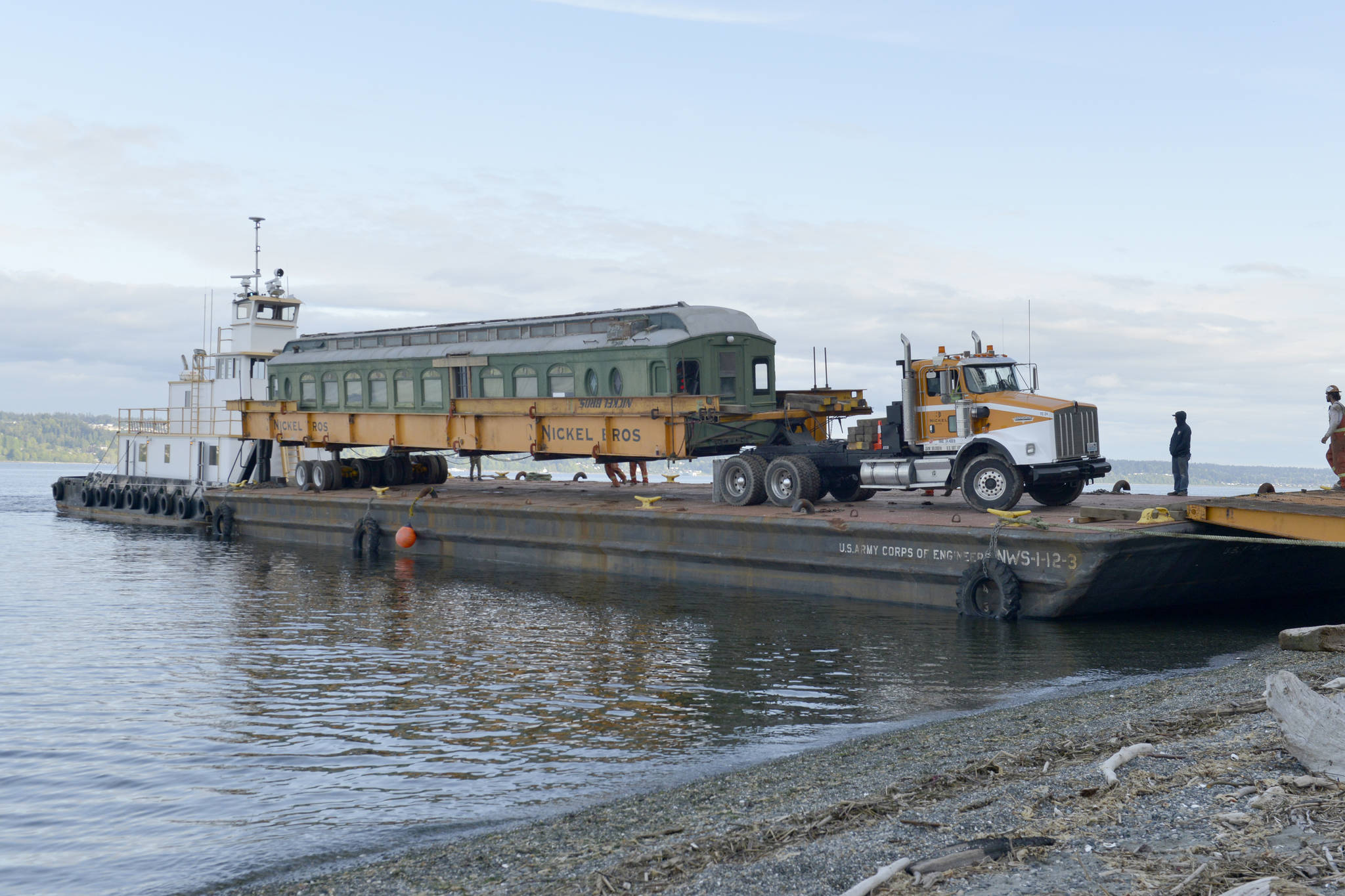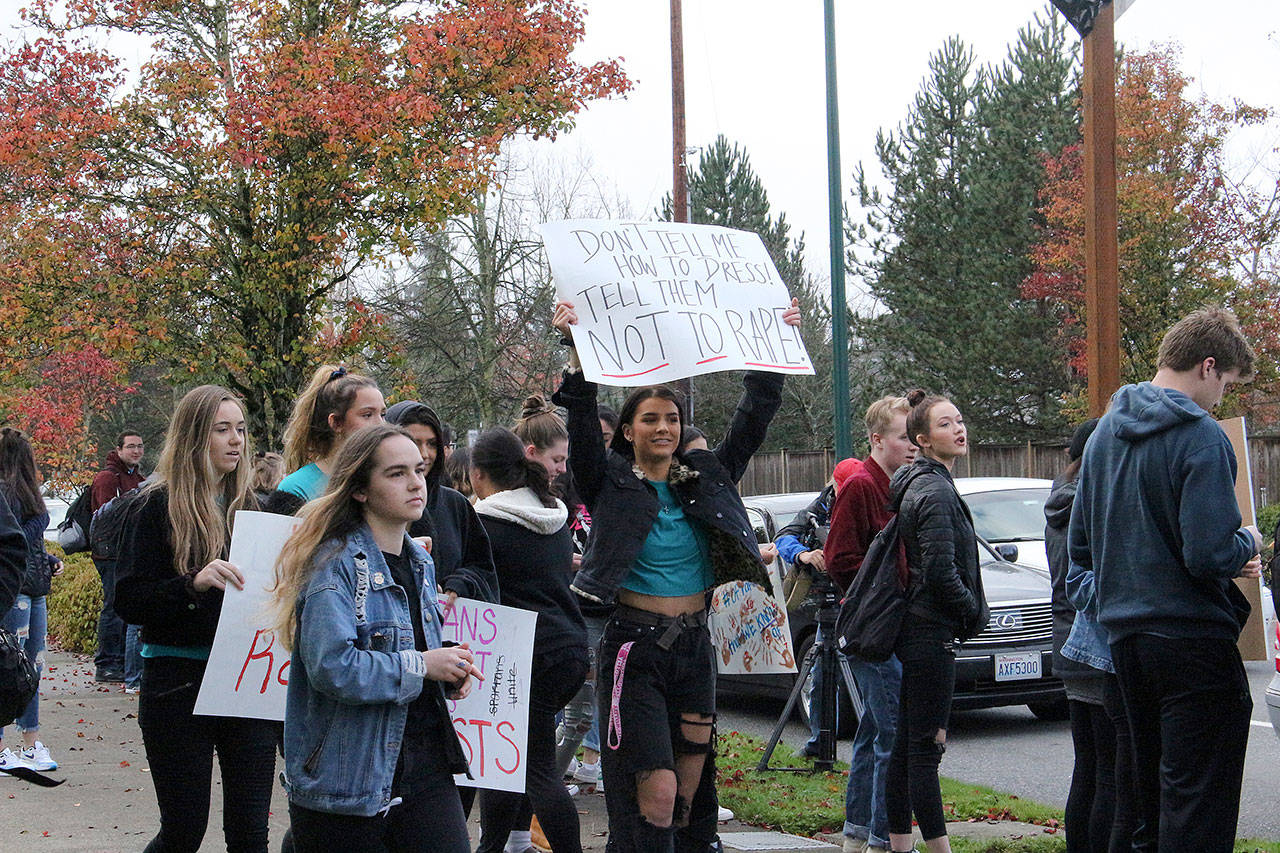• After spending more than 60 years as a cottage on Whidbey Island, the 117-year-old Parlor Car 1799 is coming to the Northwest Railway Museum in Snoqualmie.
Built in 1901 by the Pullman Company in Illinois, Parlor Car 1799 was operated by the Northern Pacific Railway from Seattle to Yakima until 1940. The car is one of two train cars built to a specific design specification called a “plan number,” and is the only survivor of the two.
Richard Anderson, executive director of the Northwest Railway Museum, explained that parlor cars, or parlor sections of train cars, were more spacious and comfortable for certain passengers.
“For people just on a day trip, perhaps they were going to Ellensburg or Yakima, the idea of the parlor car was to provide a better accommodation for someone who is willing to pay more,” he said. “It was the business class of 1901.”
By the late 1930s, several changes, such as better seating and air conditioning, had been made to train cars which led to older models falling out of favor.
According to Anderson, a railroad executive working for Northern Pacific Railway in Auburn purchased the car in 1941 and moved it to Whidbey Island to use as a cottage. The train car was treated very respectfully as only a few modifications had been made to the interior. In addition, the car itself was kept under a roof, which protected it from rain and snow.
“They used a lot of respect to route the pipes and wiring and it’s been used that way for 77 years,” Anderson said.
The third and current owners of the train car, Dan and Jana Shaw, donated the car to the museum after their daughter-in-law brought her children to Snoqualmie for the museum’s annual Day Out with Thomas event. She found that the museum was connected to the event and got in contact with Anderson about taking on the parlor car. Snoqualmie Valley Record
• Hundreds of Bothell residents gathered on Main Street on Saturday to celebrate the completion of the Main Street Enhancement Project.
The $5.8 million Main Street project began in April 2017 to revitalize and improve the area after the large fire that damaged it in the summer of 2016.
Barbara Ramey, communications officer at the city of Bothell, said that changes to the downtown area included road reworking, additional parking, and new utilities infrastructure.
“Some highlights of the project are that it straightened out the alignment of the road. There was a whole bunch of underground utility work—it was really important because underneath the road the utilities were super old and needed to be replaced,” she said. “We got almost $5 million from the State Transportation Improvement Board for construction, that’s just the construction cost, that really was what enabled the project to move forward.”
The event was co-sponsored by the City of Bothell, the Bothell Chamber of Commerce, the North Shore Rotary, and Main Street merchants. In addition to several booths from local organizations and businesses, the celebration had a bounce house for young children, and live music was performed by the Canyon Park Middle School Jazz Band and local group Tweety and the Tomcats.
As part of the official ribbon cutting, all of the event attendees gathered behind the ribbon for a photo of of the street. The photo was intentionally recreating an older historic photo of the Bothell main street as a way to show how much progress has been made in the city’s history. Bothell-Kenmore Reporter
• Northwest University in Kirkland is out $60,000 after a recent online scam.
According to President Joseph Castleberry, a scammer broke into the college’s email security and managed to redirect payments to their own account after changing payment instructions on an intercepted invoice and then sending it on to the Northwest University accounts payable department.
“Northwest University, like so many other businesses these days, fell victim to a cyber-crime, a phenomenon that is growing on a monthly basis,” Castleberry said in a school-wide email. “We are taking steps to safeguard the university and maximize our cybersecurity.”
Cpl. Cody Mann with the Kirkland Police Department said the report of the scam came in late February/early March. The suspect(s) were watching email communications and had “intimate knowledge” of payables and receivables at the school, he said. Posing as the school’s Chief Financial Officer John Jordan, the suspect then “authorized” a female employee to send approximately $64,000 to a routing number.
“She thought she was doing the right thing,” Mann said. “She didn’t know through the routing number where [the money] was going.”
That routing number was to the bank account of another woman who the suspect, posing as Jordan, had established a fake online dating relationship with. The suspect then asked the out-of-state woman to transfer money into their account.
That woman has been cooperating with police. Mann said they are treating her as more of a victim than a suspect because she didn’t understand a scam was happening at the time. Kirkland Reporter
• On the day after Christmas last year, fire broke out in the laundry room of the Auburn’s Heritage Building on East Main Street.
By the time Valley Regional Fire Authority and other local fire agencies had extinguished the fire, the second floor of the nearly 100-year-old building was gutted, and its occupants and all of the ground-floor businesses were left homeless.
Most of the occupants have since found new housing, and some of the businesses, like Top Nails, have set up shop elsewhere.
But Dec. 26 was also the day a critical clock started to tick for the building’s owner, Melina Lin, who has a limited window of time to rebuild the structure as the two-story building it was.
“When a building is damaged by fire or earthquake or something like that, whether it conforms to current code or not, a property owner has rights to rebuild something the way that it was,” explained Jeff Tate, interim director of the City of Auburn’s planning department.
That option to rebuild a nonconforming building “typically” expires after 12 months, however, according to the City’s regulations. The word “typically” is crucial here because there are other pieces of the puzzle that increase the difficulties of the building’s owner tenfold.
So, because projects like the Heritage Building are complicated, and it could take six months for insurance and investigations to grease the skids before Lin can take the next step, the code provides flexibility.
Lin is said still to be exploring many options, all of which present a wide range of costs and complexities.
She could raze the building, then recreate the two-story structure she had. She could also just demolish the building, and leave. Or she could demolish the building and build anew, up to seven stories high.
“I think you’ll start seeing in May some activity out there to start cleaning the second floor, demo the walls on the second floor. It sits there secured, but it might sit there as a one-story for a while if she decides to take things in phases,” Tate said.
Under investigation is the structural integrity of the first floor, and whether it could hold another floor or more, and the ground under the building, which is the sandy bed of the old White River. Rebuilding would probably require some shoring, but Lin has hired a structural engineer to assess whether she can build on top of the the first floor. Auburn Reporter








